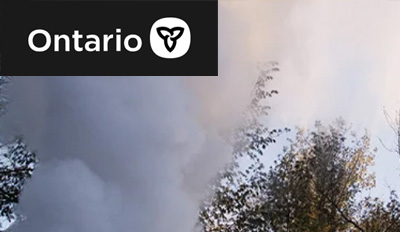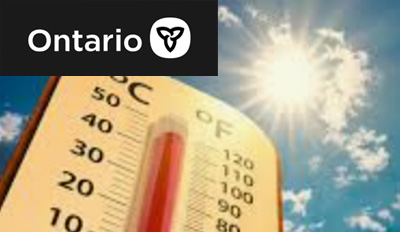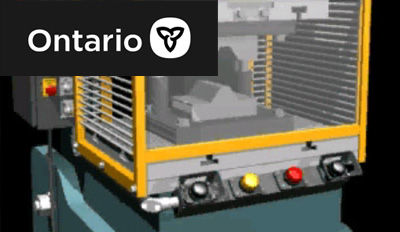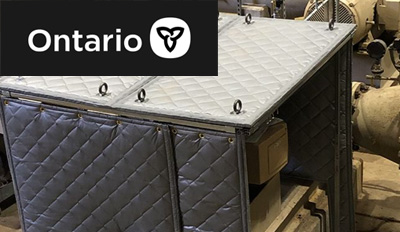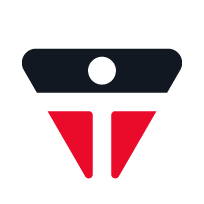Occupational Illness
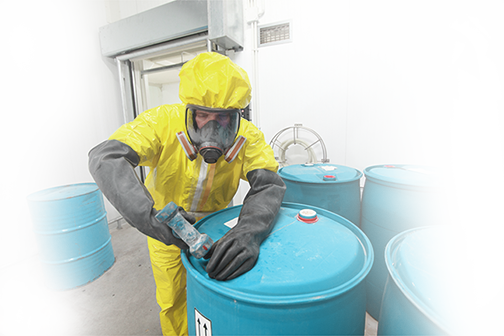
OHCOW’s mission is to prevent occupational illnesses and injuries, and to promote the highest degree of physical, mental and social well-being of all workers.
We strive to accomplish this through the identification of workplace factors which are detrimental to the health and well-being of all workers, through the distribution of excellent occupational health, hygiene, and ergonomic information to increase knowledge among workers, employers and the general public, and through the provision of services designed to produce changes to improve workplaces and the health of workers.

Joint Health and Safety Committees (JHSC) and Health and Safety Representatives (HSR)
In accordance with the Ontario Occupational Health and Safety Act (OHSA):
- Workplaces with over 20 workers (or with the presence of a designated substance) must establish a Joint Health and Safety Committee (JHSC)
- Workplaces under 20 workers, must have Health and Safety Representative (HSR)
OHCOW works in partnership with your Joint Health and Safety Committee (JHSC) or your Health and Safety Representative (HSR) to provide the expertise of our health and safety professionals your workplace requires.
OHCOW RESOURCE • WEBINAR SERIES
OCC | TOBER & BEYOND
Occupational Illness and Disease Prevention Webinar Series
OHCOW RESOURCE • VIDEO
Empowering Joint Health and Safety Committees (JHSC)
A Review of Roles and Responsibilities
A recorded webinar produced by James Miuccio, CIH, CRSP, Occupational Hygienist, and Sonia Lal, CIH, CRSP, both Occupational Hygienists from OHCOW, covering the following:
- Introduction to Occupational Health Clinics for Ontario Workers (OHCOW)
- Joint Health and Safety Committee Roles and Responsibilities
- Joint Health and Safety Committee Tools and Document organization
Hazard and Control Banding
Hazard and Control Banding is a method of assessment that can be used to manage workplace risks.
Hazard and Control Banding can be used to match a range or “band” of hazards to the appropriate control measures. The band of hazards could include outcomes like skin/eye irritation, carcinogenic, or lung toxicity. Control measures may engineering controls such as ventilation or containment.
The control banding method can also be used to group chemicals according to:
- similar physical or chemical characteristics
- how the chemical will be handled or processed
- and what the anticipated exposure is expected to be.
The method then determines a set of controls chosen to help prevent harm to workers.
OHCOW RESOURCE • WEB PAGE
Hazard and Control Banding
A Review
OHCOW RESOURCE • INFOGRAPHIC
Workplace COVID-19 Risk Management (Control Banding) Matrix
The OSHA Risk Levels presented in a control banding matrix to help support decisions on risk management.
OCCUPATIONAL HYGIENE and PREVENTION
Workers can be exposed to a variety of hazards in their workplace.
They might encounter anything from safety hazards, to chemicals or even biological agents, not to mention physical hazards (like noise), ergonomics and psychosocial risk factors.
OHCOW provides expertise to workers and workplaces to help with identifying and control exposure to such hazards.
Our mission is to recognize and prevent occupational disease, this includes prevent harm due to exposure by inhaling substance, getting them on your skin, even having them contaminate your coffee or your lunch at work.
Occupational Hygienists have special skills to anticipate, recognize, evaluate and control workplace hazards. While there are many occupational hygienists who work for businesses, consultants and for the Ministry of Labour; OHCOW hygienists practice in a unique context – an inter-disciplinary occupational health team (with doctors, nurses, ergonomists, etc.). The clinical context OHCOW hygienists work in provides a unique interdisciplinary environment. Rather than focusing on compliance evaluations, OHCOW hygienists are orientated to the occupational disease prevention opportunities. Rather than simply measuring exposures and comparing them to legal criteria (occupational exposure limits (OELs), OHCOW hygienist take their cue from identifying risk factors for health conditions and using problem solving skills to eliminate or reduce exposures. The approach taken is to work with the Joint Health & Safety Committee and enable them to address the concerns workers have about the exposures they experience. This participatory strategy aims at resolving workers’ health concern, not necessarily demonstrating compliance with legal requirements.
OHCOW hygienists also work with individual workers to record personal exposure histories. Workers with a particular disease may wonder whether the exposures they experienced over their working life may have contributed to the development of the disease. For instance, someone with asthma may wonder if the chemicals they’ve inhaled at work may have contributed to their condition. The hygienist will review their work history with them asking questions about the conditions of various exposures, reviewing safety data sheets, hygiene reports and the workers symptom patterns during the exposures. The hygienist will also review the scientific literature regarding typical exposures in similar environments and the association of the health condition with such exposures. This information will feed into the occupational health team’s collective assessment of the work-relatedness of the worker’s health condition.
OHCOW hygienists also answer questions about exposures and occupational disease. They are also available to explain particular hazards and ways of reducing or eliminating exposures. Common topics are indoor air quality, noise, asbestos, heat stress, dust, smoke, combustion exhaust, breathing irritants, chemicals causing skin problems, etc.
Some of the methods used by occupational hygienists can be quite technically challenging and require a fair bit of education and expertise to master. However, clinic hygienists strive to provide workplaces with simple tools and techniques to enable workers to evaluate hazards. Simple rules such as knowing the odour threshold of a particular chemical can help workers estimate the degree of exposure and associated hazard. Observation tips such as identifying moist conditions in building materials can help identify potential exposure concerns and focus prevention efforts. Having to shout to be heard at an arm’s length away is an indicator of excessive noise exposure. Various checklists, charts and rules of thumb can help those without formal expertise to identify exposures of concern. OHCOW’s heat stress calculator is an example of a simple tool based on Humidex to help workers determine safe working conditions.
OHCOWs hygiene services are available to everyone who has a workplace exposure/occupational health question, and to any workplace needing assistance with an occupational health concern. Individual services can be accessed merely by contacting the clinic (no referrals required) and workplace assistance is available to Joint Health and Safety Committees providing a written request (signed by the JH&SC Co-Chairs) to the clinic.
For queries please contact us at ask@ohcow.on.ca
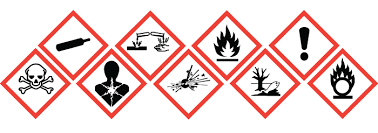
WORKPLACE HAZARDOUS MATERIALS
INFORMATION SYSTEM (WHMIS)
The Workplace Hazardous Materials Information System (WHMIS) is Canada's national hazard communication standard.
The key elements of the system are:
- Hazard Classification
- Cautionary Labelling of Containers
- Provision of Safety Data Sheets (SDSs)
- Worker Education
- Training Programs
Use the resources listed on the right to learn more about and keep current in relation to WHMIS and its requirements.
OHCOW RESOURCE • WEB SITE
Canada's National WHMIS Portal
OHCOW RESOURCE • PDF SLIDE DECK
Prioritization Approaches for Occupational Exposure under the Chemicals Management Plan
October 16, 2020: A presentation made at the 6th Annual Occ-tober Symposia on Occupational Health & Disease Prevention
OHCOW RESOURCE • TOOL
Chap-Risk Tool
An Excel-based tool used for identifying and prioritizing workplace chemical hazards.
OHCOW Services
OHCOW offers a wide range of services to support our prevention efforts including:

Information/Inquiry Services
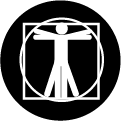
Ergonomic
Assessments
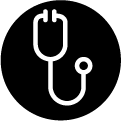
Medical Diagnostic Services
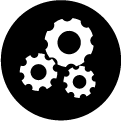
Group
Services

Outreach and
Education Services
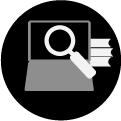
Research
Services
Visit our Services and Referrals page to learn more about each service.
Our services are provided by a team of experts including:
Ergonomists • Occupational Medicine Physicians • Occupational Hygienists • Occupational Health Nurses
Visit our About OHCOW page to learn more about these experts.
PREVENTION APPS, TOOLS and CALCULATORS
APPS
The following apps are available for your smartphones and tablets to help you work safer and smarter.
They are available through both the Apple and Google stores using the buttons provided.
The app guides you through 12 distinct health and safety topics prompting you to:
describe the hazard • identify its source/cause • and to provide your ideas on how to fix it.
It also allows you to take pictures and mark them up with circles and arrows if needed and then create a PDF report which can be emailed to your organization’s workplace health and safety contacts for follow-up.
Prevention resource links are provided so that you can learn more about various hazards, the associated risks, along with ideas on what changes could be made to improve workplace conditions.
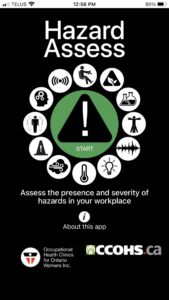
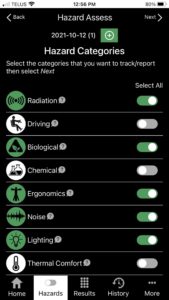
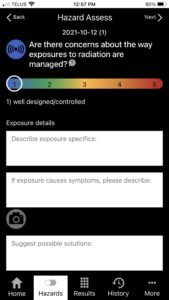
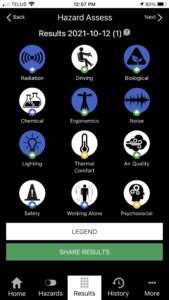
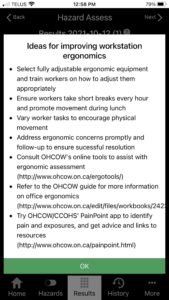
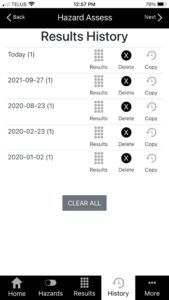
Download HazardAssess for your device using the buttons below:
StressAssess was produced in cooperation with the Canadian Centre for Occupational Health and Safety (CCOHS).
Indoor air quality issues at work can be caused or aggravated by a number of factors. The interrelationships between these factors can be quite complex. By answering questions about your environment, symptoms, workplace stress levels, and allergies, you can help identify issues which may be related to the air quality in your workplace. This app will look for links and provide you with some ideas to help address these air quality issues. Plus you can share the results to raise awareness and start a discussion about IAQ solutions in your workplace.
AirAssess consists of three scientifically recognized questionnaires on the indoor environment (air quality), job strain (stress), and asthma symptom screening. The app, and the tips provided, are based on the work OHCOW, who have used these surveys in a large number of workplaces over the past several years.
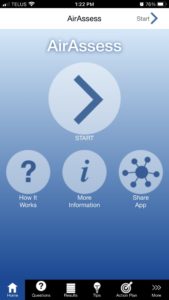
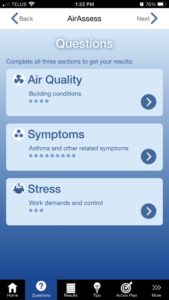
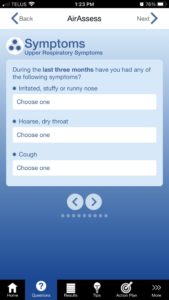
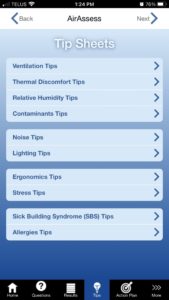
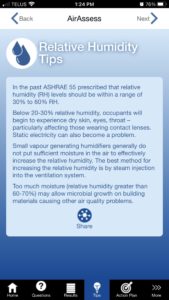
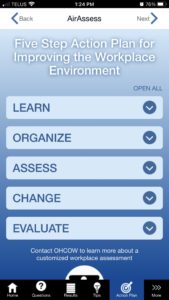
Download AirAssess for your devices using the buttons below:
AirAssess was produced in cooperation with the Canadian Centre for Occupational Health and Safety (CCOHS).
TOOLS and CALCULATORS
The following tools are available to help you work safer and smarter.
Most of them are Excel spreadsheets, with detailed instructions provided.
Irregular work shifts are now commonplace in many industries and the standard eight-hour work day/40 hour work week (which has been the basis for the time-weighted average (TWA) occupational exposure limits) is often not the reality. To address this change, exposure standard adjustments have increasingly become an essential component in workplace exposure assessment.
Brought to you by OHCOW, and the Occupational Disease Action Plan Contributors, this tool* allows the calculation of the adjusted workplace exposure limit for an unusual or extended work shift which has been adapted using the methodology set out in the Guide for the Adjustment of Permissible Exposure Values for Unusual Work Schedules (March 2015), published by Quebec’s Institut de recherche Robert-Sauvé en santé et en sécurité du travail (IRSST).
Instructions for use are provided at the bottom of the Tool’s Intro page by clicking on the “Important” arrow.
A practical tool, developed by OHCOW, designed to create an efficient and organized way to complete QEC assessments.
The tool allows users to document tasks of different jobs and identify the resulting exposure levels. The tool has been formatted to colour the resulting exposure level cells based on the original tool reference guide (low, moderate, high, very high).
The tool will be particularly helpful to workplaces who implement solutions to address the identified hazards. Users are able to document before and after scenarios and compare the exposure levels to ensure that the intended reduction in exposure levels has occurred.
IMPORTANT NOTE
This spreadsheet tool has been designed for use with Microsoft Excel 2007.
Using the tool in earlier versions of Excel will be functional, however, it will lose some of the colour formatting associated with the exposure levels and the legend.
If users are using earlier versions of Excel, they are encouraged to refer to the QEC Reference Guide for the associated exposure levels.
The colour coding of the total exposure scores will be incorrect, but the actual numerical score will be accurate.
An Excel-based tool used for identifying and prioritizing workplace chemical hazards.
Developed by researchers at the School of Occupational and Public Health at Ryerson University and representatives from five national and provincial unions and three provincial health and safety associations (including OHCOW)
SUBMISSIONS
OHCOW’s mission includes a goal to protect workers and their communities from occupational diseases, injuries, and illnesses.
As part of this mission, OHCOW encourages health-based and evidence-based occupational exposure limits (OELs) for chemicals, and equivalent sound exposure level criteria for noise exposure.
Reports to the Ministry of Labour, Immigration, Training and Skills Development
OHCOW has produced submissions for Ontario’s Ministry of Labour, Immigration, Training and Skills Development (MLITSD), and its predecessor ministries (MLTSD, MOL), to address evidence-based limits for Ontario regulations.



